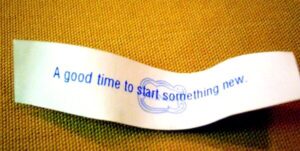
Want a Successful Career? Dig In, But Give it Time to Develop
A career, by definition, is something that develops over an extended period of time. In other words, a successful career is not born — it

A career, by definition, is something that develops over an extended period of time. In other words, a successful career is not born — it

Leadership has its own battles with productivity, as longtime TalentCulture friend and leadership expert Gregg Lederman says. He recently dove into why some leaders struggle
So many of us lose sight of our dreams and what really makes us happy as we go through the mundane parts of life. How
So many of us lose sight of our dreams and what really makes us happy as we go through the mundane parts of life. How
Why do we resist accepting our accomplishments? I’ve meet too many successful people who suffer from impostor syndrome. These are individuals who (despite the evidence)
Smart business people: Understand that the way to serve customers in an exemplary way is to serve employees in the same manner. If dazzling service
Stephanie Leffler, the dynamic, mission-driven CEO of CrowdSource, carefully controls where her time goes. For years, she’s kept a thorough action item list against her

How can your company do a better job of making hiring choices in today’s competitive marketplace? Let’s talk at #TChat Events

After years of working closely with leaders in every kind of organization, Ted Coine opens up about a missing piece in the leadership toolkit.

Managing career decisions can be overwhelming. But all of us face an uncertain future. What can Richard Branson’s career teach us?

What really makes “great” employers special? And can how can companies make “great” magic last? #TChat lessons learned

How can leaders revitalize business cultures? Symbols may not seem essential, but let’s take a closer look

What can long-distance running teach us about entrepreneurship? Here are 6 ideas from a street-smart young leader

What does it take to be a leader others actually want to follow? Here are 5 ways any aspiring leader can move in the right direction

Emotional intelligence is much more than a “soft skills” buzzword. It’s a leadership essential at today’s most successful companies. How can it work for you? Let’s discuss!

Social media is redefining influence in all respects. What does this mean for employer and personal brands? Let’s talk about it…

Next-generation leaders have landed, with technology as a constant companion. What should we expect for the future of business?

Competition in the workplace is unavoidable. How do you make the most of it, without letting it get the best of you?

Wildly successful business networking author, Bob Burg shares a vital piece of advice for intrapreneurs — inspired by Yum! Brands CEO, David Novak

Think you’re ready to quit your job and strike out on your own as an entrepreneur? There may be a better path to your professional goals…
What qualities are essential in an effective leader? That’s the topic we’ll explore at this week’s #TChat forum – focusing on a great new business book, “The Character Based Leader” …